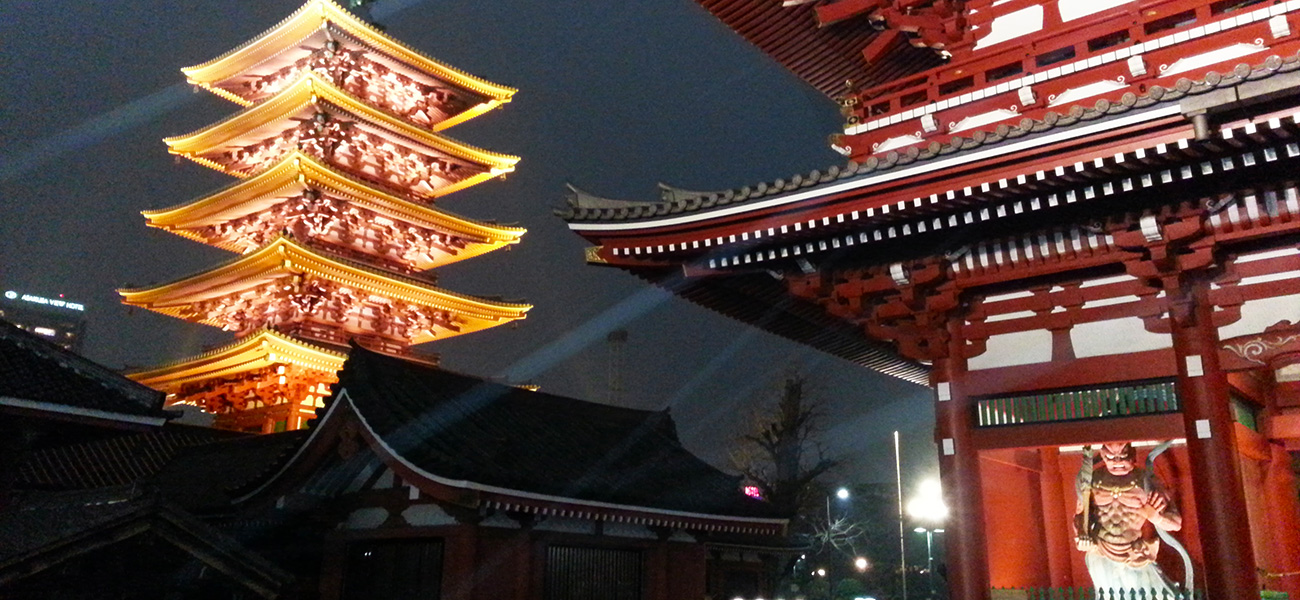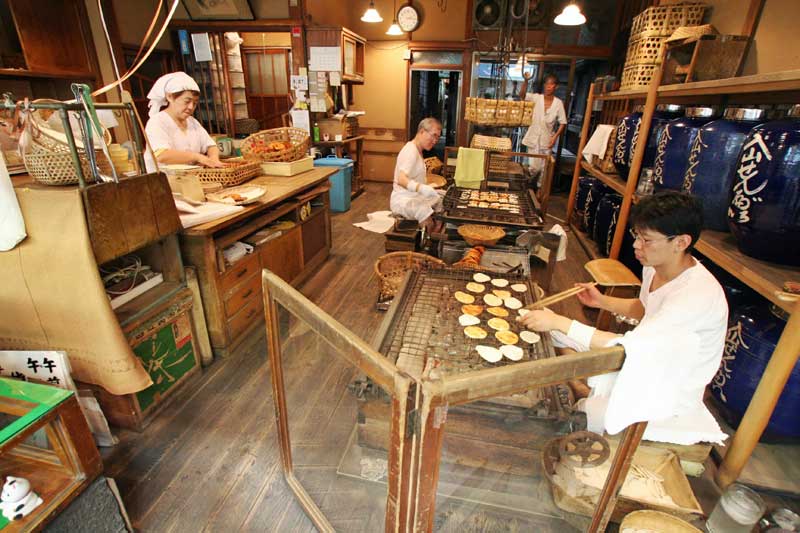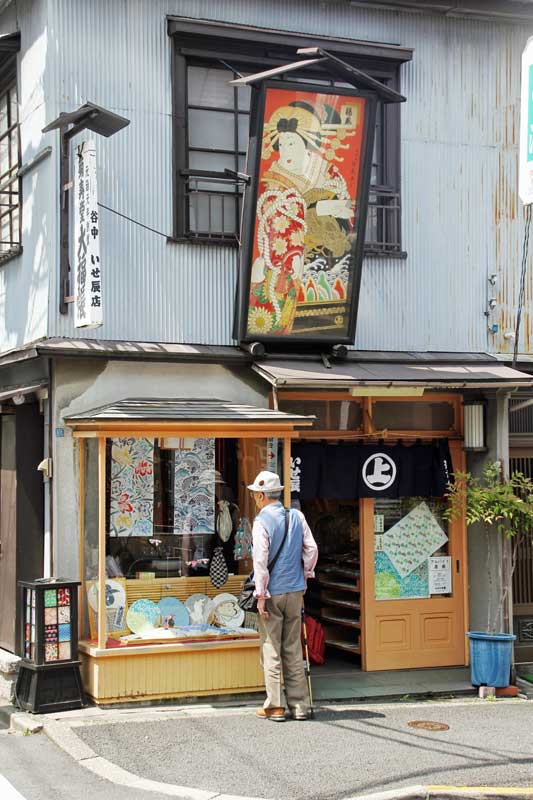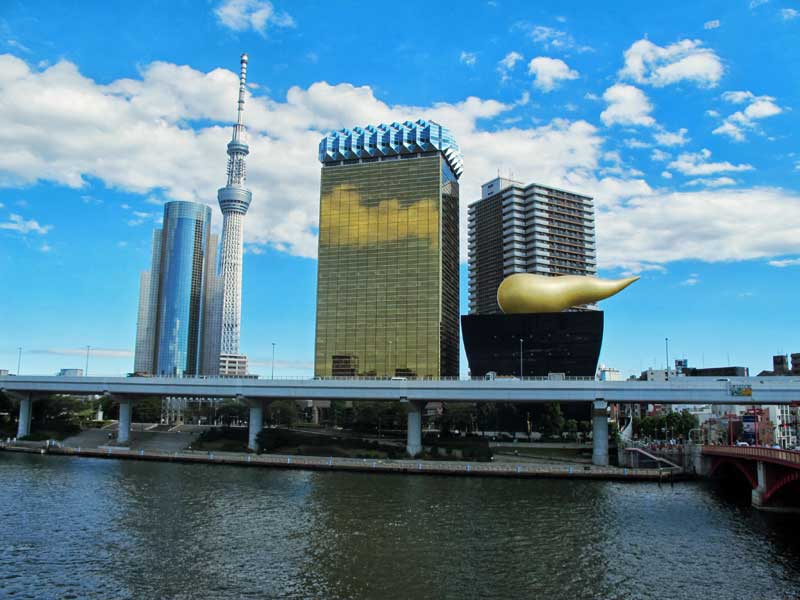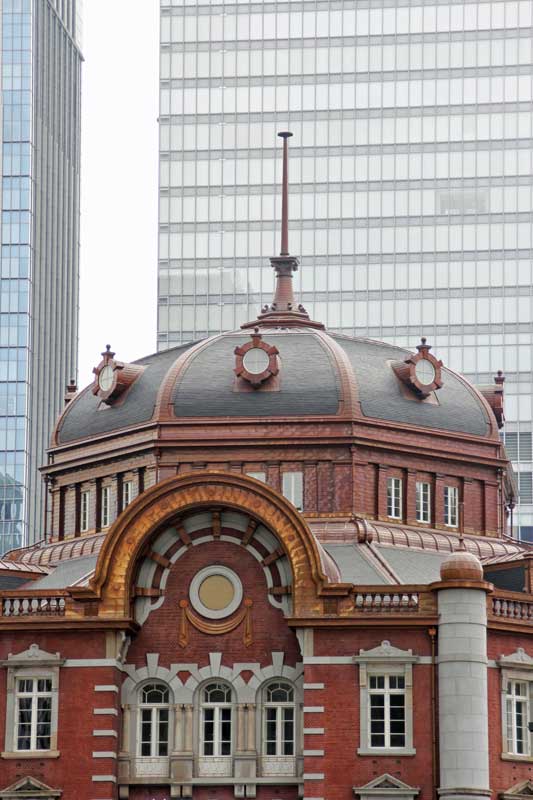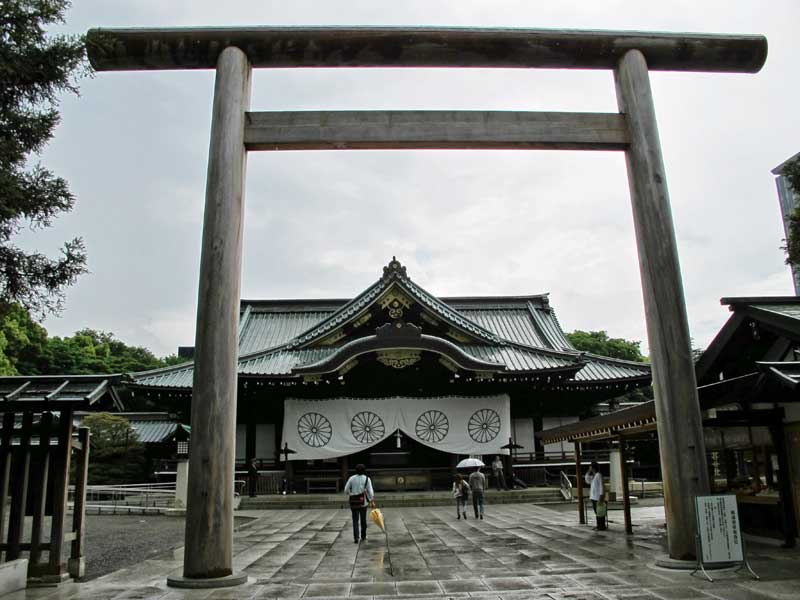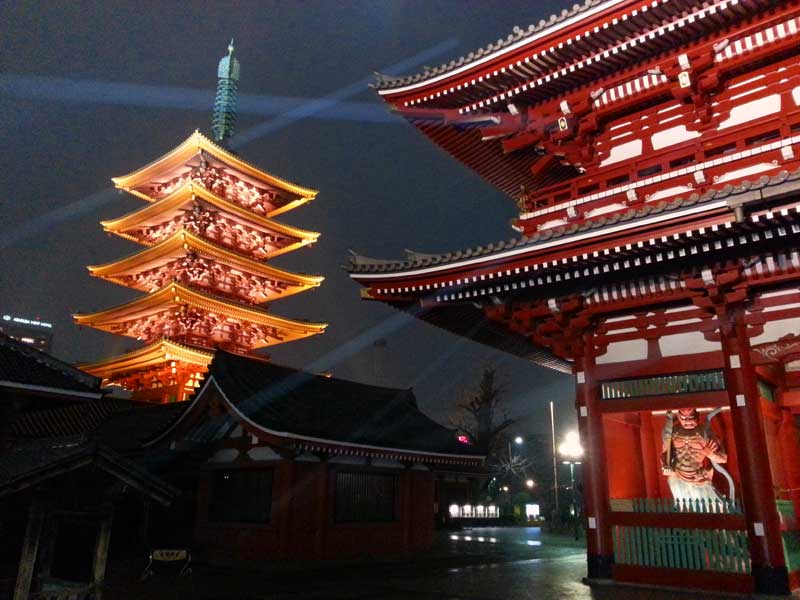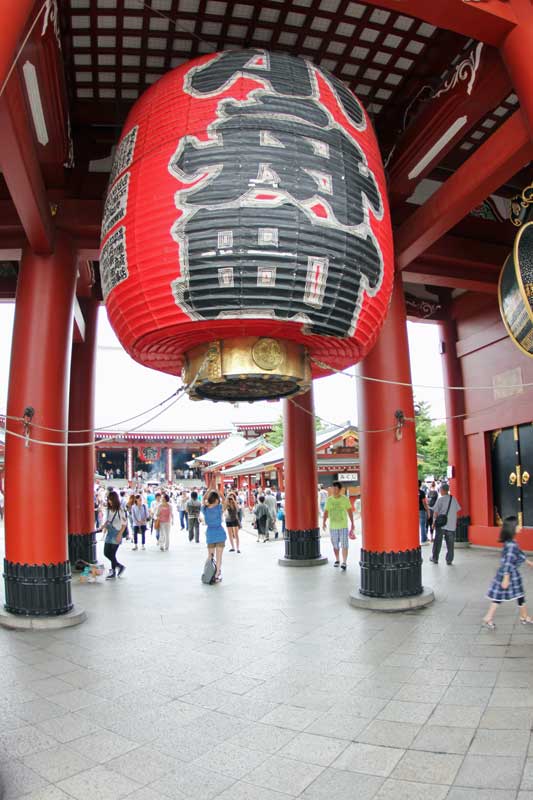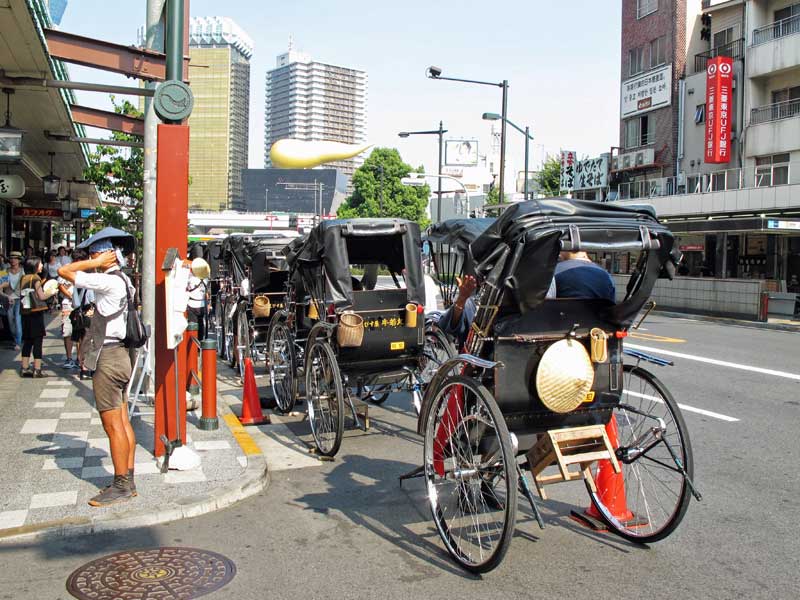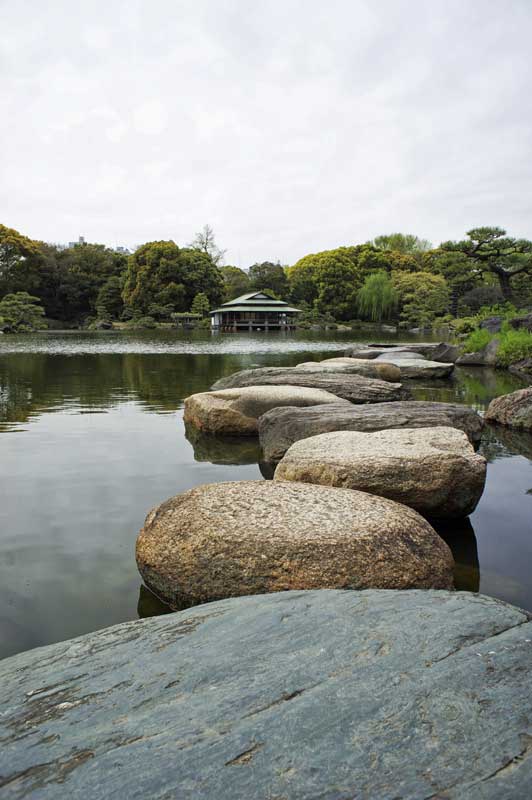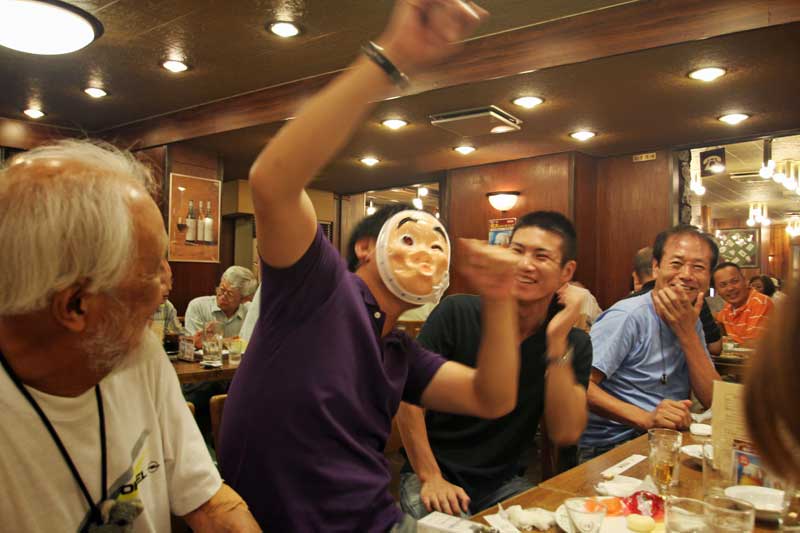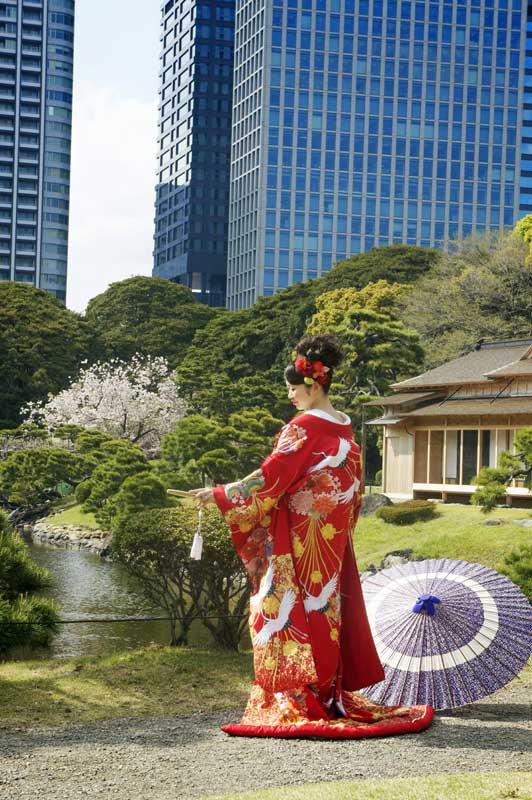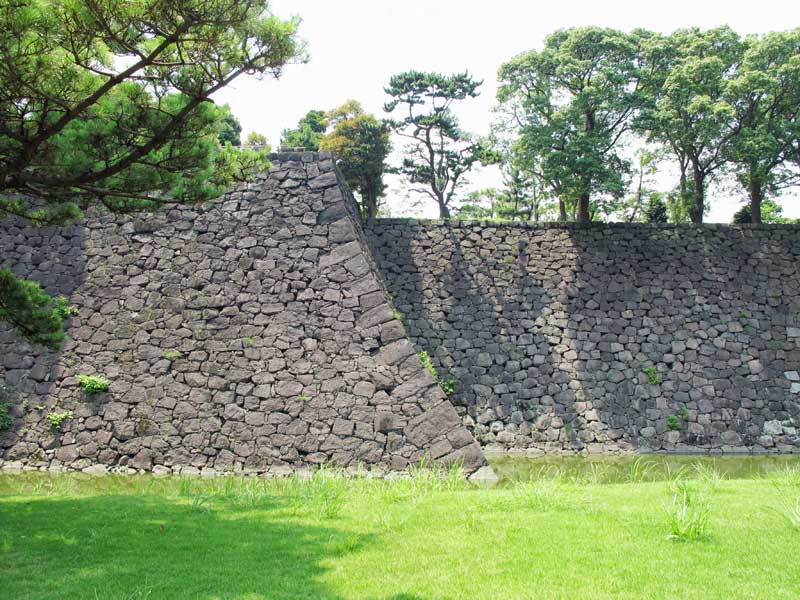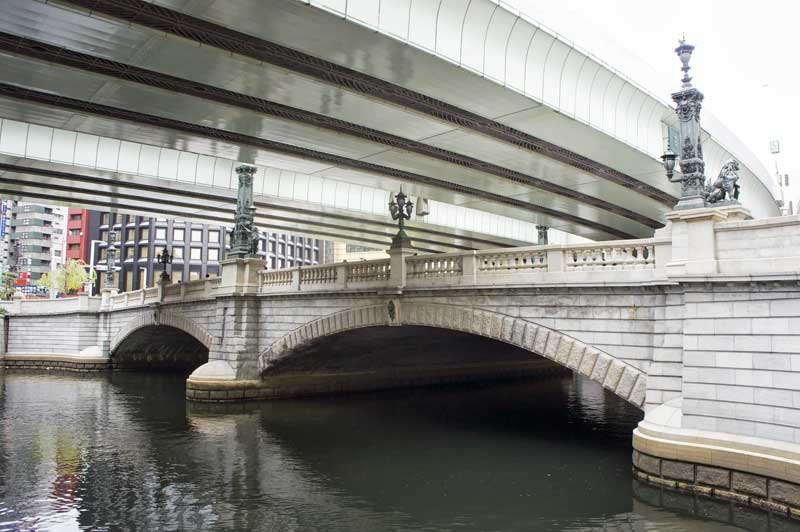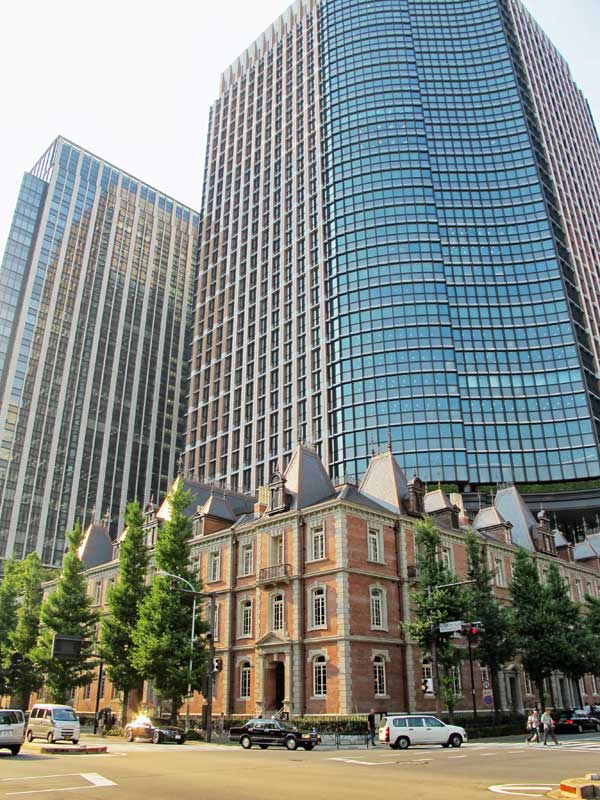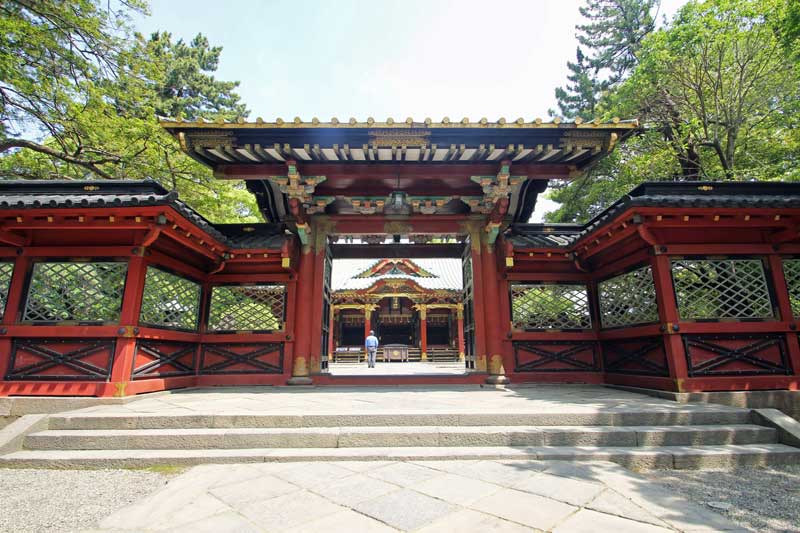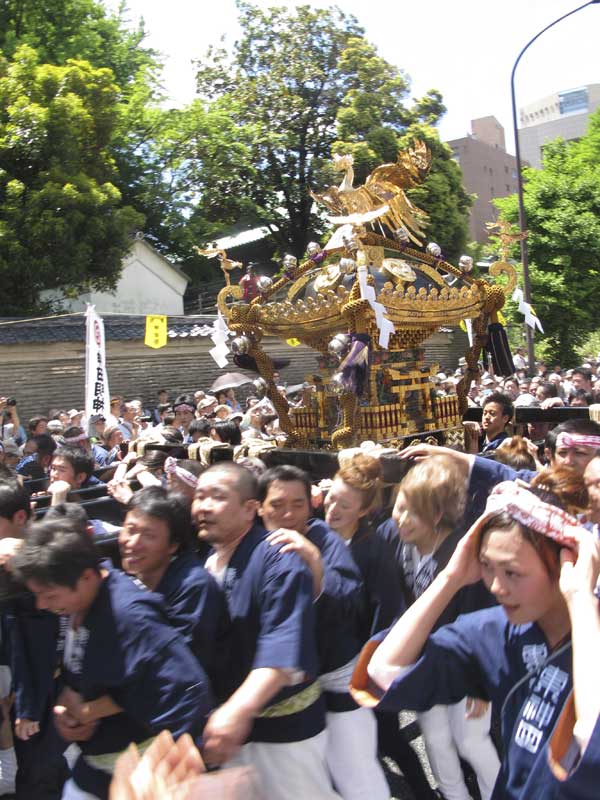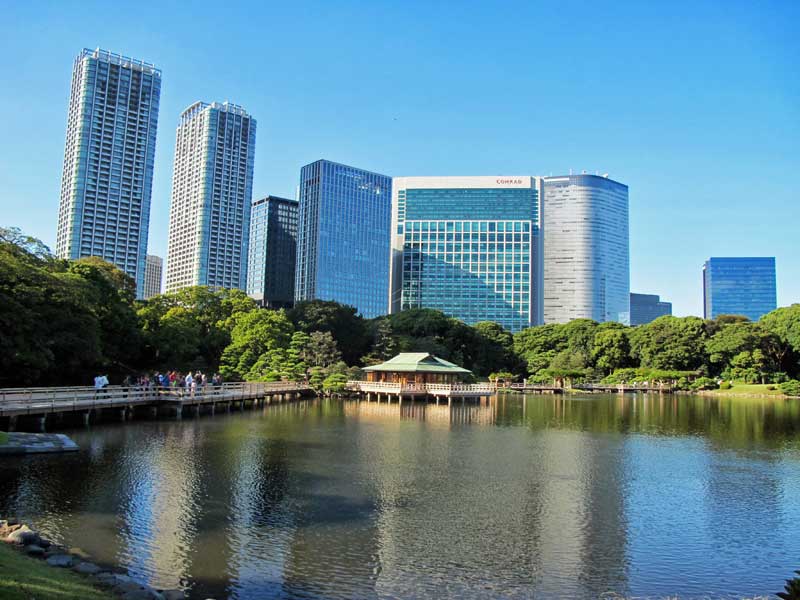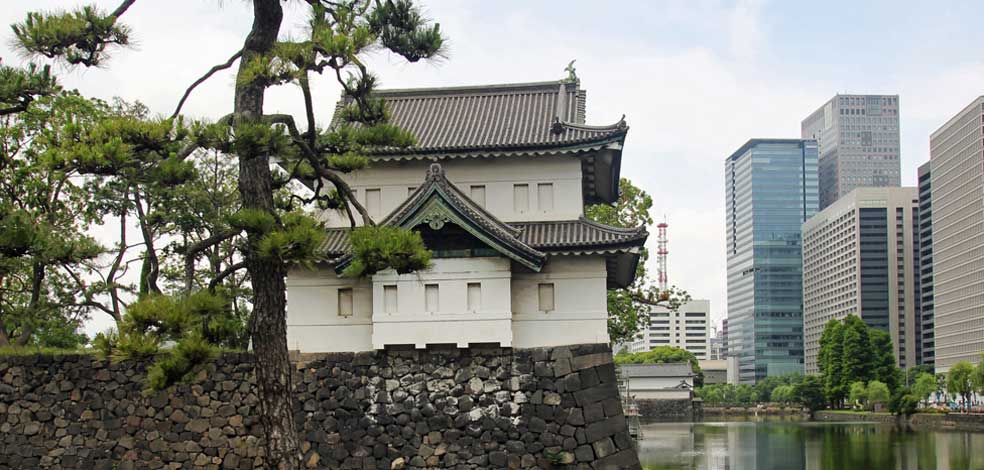A two-day guided walk through Tokyo’s fascinating history; from founding shogun to today's glittering metropolis; find remnants of and insights into samurai Edo amongst gleaming architecture in one of the safest, most liveable and most intriguing cities in the world.
Timed to follow immediately after Walk Japan's iconic Nakasendo Way tours.
Year-round.
A two-day city tour. Each tour day is fully guided and starts, depending on the day’s itinerary, at either 8:30 am or 9:00 am and finishes at around 5 pm. For customers joining after the Nakasendo Way tour, the Tokyo Tour starts after breakfast when the Nakasendo Way finishes.
The maximum group size for this tour is 12 persons. We have no minimum size. If we accept a booking we guarantee to run the tour.
Walk Japan's two-day Tokyo Tour explores what is perhaps the most enigmatic cities of the world. Tokyo is the epitome of the modern metropolis: bullet trains glide across the city’s roof tops and past gleaming new skyscrapers; vast TV screens looming over intersections blast their messages down over the teeming masses; the pride of Japan’s industries display their latest innovative products to the ever-receptive Japanese consumer; a network of freeways lace above and below the city carrying a never-ending stream of vehicles; and the young, in unique and eclectic dress, populate many of the fashionable city quarters. Tokyo, a city of over ten million souls, bustles 24 hours a day. Seemingly never satisfied with itself, it keeps on restlessly rebuilding itself at amazing speed and on a vast scale.
Tokyo is a modern mega-city par excellence. It is also a puzzling place. Whilst its modern urban landscape is recognisable around the world, little is known of its past that led some nineteenth-century Western visitors to call it ‘The Venice of the East’. Today, the city seems so modern that its history, a great and fascinating one, is almost always overlooked by Japanese and visitors from overseas alike. Our Tokyo Tour delves into the city’s history, beginning when it was called Edo and had at its core one of the world's greatest fortress citadels. We learn how Edo, the site of a marsh 500 years ago, came to be the samurai military stronghold that dominated Japan for much of three centuries; how it nurtured its unique Edo culture, which, alongside Kyoto’s refined culture, has had a great impact on Japan to this day; how rebuilding has always been a major feature of the city; how it came to be Japan’s capital; and how in the present can still be found clues to its unique past. Our fully-guided, gently-paced walking tour reveals the unique and fascinating history of the city, from its feudal samurai origins through to the development of its modern visage.
Walk Japan’s Tokyo Tour focuses on the reasons for the city’s existence and how it came to be the centre of Japanese political and economic power. Looking at the lives of both the great and powerful and the townspeople, we delve into Edo and its subsequent development into capital city and ultimately megalopolis. We learn how the samurai ran their city and also how the townspeople, living in their shadow, developed a culture that boasts kabuki theatre, print-making and the floating world. Tokugawa Ieyasu, the greatest shogun, and the near 270-year Tokugawa family domination of Japan that Ieyasu began, take centre stage in our walk through Tokyo. But we also focus on the lives of the not-so-great, including samurai foot soldiers, merchants, craftsmen and entertainers, from feudal times to the present day.
We learn how Edo and Tokyo came to be the centre of Japan’s politics, economy and its day-to-day culture. We visit some of the greatest historical sites of Tokyo; stroll through some quiet neighbourhoods that still impart a sense of the older city; and come to understand how much of modern Tokyo has its roots in a much-concealed but fascinating history.
Day 1 of Walk Japan’s Tokyo Tour introduces us to the city of the samurai, once centred on its military citadel and highly organised life. We learn how Edo came to be and how it developed from a samurai stronghold to modern city.
Day 2 focuses on the lesser-known but no less interesting city of its people, their way of life and how they interacted with the samurai to develop the Edo culture, and how it changed with the city’s growth.
Walk Japan’s Tokyo Tour consists of a two-day itinerary. On both days we meet at the day's starting point as indicated in the itinerary. Walk Japan provides detailed instructions on how to join the tour at its starting point.
Each day ends at around 5pm in central Tokyo with the specific end point depending on the itinerary for the day. The Walk Japan tour leader will help arrange onward travel to your accommodation or other desired location, or give recommendations for some of the myriad excellent local restaurants.
For customers joining after the Nakasendo Way, the Tokyo Tour starts after breakfast when the Nakasendo Way finishes.
Day 1
The city of the shogun: an introduction to the establishment of Edo; its administration; the life of the shoguns, daimyo, and samurai; and Edo castle’s immediate neighbourhood, Nihonbashi.
We gather at 9am in Nihonbashi, Tokyo's original downtown area. Nihonbashi was the centre of Japan in the Edo period and all the nation’s principal roads, including the Nakasendo and Tokaido, led here. Nihonbashi was ‘on the doorstep’ of Edo Castle and this is where most travellers to Edo completed their journeys. We learn how Nihonbashi first grew up as a neighbourhood of craftsmen, entrusted with the building of Edo, before developing into a merchant quarter supplying the needs of the shoguns’ court and townspeople alike. We learn about some of the personalities associated with the area including William Adams and Sadayakko. Adams was an Englishman who became a confidant of the great shogun Tokugawa Ieyasu and was one of only two Westerners ever to become a samurai. Sadayakko was a geisha, born in Nihonbashi, who became celebrated throughout the West at the beginning of the twentieth century, performing for the presidents of the USA and France, the Prince of Wales, and the Tzar of Russia, and appearing on the front of Harpers Bazaar magazine in 1900.
We walk via the modern business district of Marunouchi to the Imperial Palace. Marunouchi is now Japan’s premier business district but was once an integral part of Edo Castle and we uncover some clues to this on our way. Just beyond here is the site of Edo Castle, now the Imperial Palace. Today the Palace provides a verdant refuge at the very centre of Tokyo. At 5km (3.11 miles) around its circumference, it also provides a popular, pleasant jogging course. However, as large as the current extent of the Palace grounds are, they represent only a fragment of Edo Castle’s original 16km (9.94 miles) periphery.
On reaching the Imperial Palace we stroll through the core of the former castle grounds, where the towering central keep once stood. The keep has not existed since it last burned down in the mid-seventeenth century, but the massive stone ramparts of the castle still standing evoke the magnificence and power of life at the shoguns’ court.
We exit castle grounds via the Hirakawa-mon, the gate used by the Shogun's ladies-in-waiting when they ventured out into the city. Adjacent to Hirakawa-mon is the so-called ‘Impure Gate’, which was the exit route of criminals, including Lord Asano, from the castle. After Asano was forced to commit suicide, 47 of his retainers avenged his death, creating one of the most celebrated stories in Japan.
A short subway ride brings us just beyond the original extent of Edo Castle to Iidabashi, originally a small distribution point for goods that, along with nearby Kagurazaka, grew into one of the city's largest geisha entertainment districts. We enjoy lunch, which is not included in the tour, here. Your Walk Japan tour leader will, however, recommend places to eat and help settle you in as required.
After lunch we walk to Koishikawa Korakuen, one of the best examples of a Japanese garden in Tokyo. Once part of a powerful daimyo’s estate, today it is one of only seven locations in Japan listed as a Special Place of Scenic Beauty and also a Special Historic Site. After a leisurely stroll through the gardens we transfer by train to Koto for a guided visit to the excellent Fukagawa Edo Museum, a charming re-creation of a late Edo period scene of the locality.
Although the tour does not extend into the evening, your tour leader will be available to make suggestions about where you may like to eat.
Day 2
The city of the Edo townspeople: today, we gain a feel for the city of the Edokko, the townspeople, and their lives from the Edo Period, through the city’s tumultuous transition into the nation’s capital in the late nineteenth century, and up to the present day.
The group meets at 9am before transferring to the old temple district and charming downtown neighbourhood of Yanaka. Little now remains to see in Tokyo of the life of the people from the Edo Period through to the mid-twentieth Century. However, Yanaka, a quiet quarter, with winding streets, narrow alleyways, local shops and an intimate feel, provides perhaps the closest approximation to how life once was in downtown Edo.
From here we stroll on to Ueno Park. The park was once the site of a temple complex that protected Edo Castle from the north-east, still considered a direction of bad omen in Japan. Within the park remains a shrine to the Tokugawa shoguns and it was here that the Tokugawa troops made their last futile stand against the prevailing forces of the coming new order. In one corner is a statue to Saigo Takamori, one of the great but ultimately doomed heroes of the overthrowing forces. The deposing of the Tokugawa Shogunate and the restoration of the emperor in 1868 set Japan on a path to becoming a democratic industrial nation. It also marks the transformation of Edo into Tokyo; from a feudal citadel into the capital of a modern nation state.
We continue our journey on through nearby Ameyoko-cho, a bustling, downtown street market that has its origins as a black market in decimated post-war Tokyo. We lunch here beneath the train tracks before taking the subway to Asakusa, home of Tokyo's oldest temple and largest amusement quarter in the city up until World War Two. Although meals are not included in the tour your Walk Japan tour leader will again be on hand to recommend a restaurant in the area and to help settle you as required.
Asakusa, which should not be confused with Tokyo’s Akasaka, is now considered the home of the Edokko. The area has long been famous for its Senso-ji temple, which, according to legend, was founded after two fishermen brothers pulled a golden statue out of the Sumida River. Home of numerous temples, Asakusa was also an entertainment destination for both samurai and commoners. In addition to dining and drinking establishments, story-tellers, acrobats, puppet shows and teahouses also plied their trades. We also take time to explore the surrounding streets, which provide a sense of the local culture that is still connected to its roots in Edo and early Tokyo. A plethora of good local restaurants and interesting period bars provide a pleasant way to conclude today’s tour.
Although the tour does not extend into the evening, your tour leader will be available to make suggestions about where you may like to eat.
This itinerary is subject to change.
The airports closest to the tour’s start in Tokyo are Tokyo’s Haneda or Narita International Airports. Transfer is also easily made from both Nagoya’s Central Japan Airport, and Osaka’s Kansai International Airport.
-----
FROM TOKYO’S NARITA AIRPORT (NRT)
From Tokyo’s Narita International Airport, Narita Express trains depart to Tokyo Station. The journey costs about JPY2,940 per person and takes approximately 50 minutes.
-----
FROM NAGOYA’S CENTRAL JAPAN INTERNATIONAL AIRPORT (NGO)
From Nagoya’s Central Japan International Airport, Meitetsu Line trains depart to Nagoya, where Shinkansen bullet trains then depart for Tokyo Station. The journey costs about JPY12,100 per person and takes approximately 2 hours 20 minutes.
-----
FROM OSAKA’S KANSAI INTERNATIONAL AIRPORT (KIX)
From Osaka’s Kansai International Airport, Haruka Express trains depart to Kyoto Station, where Shinkansen bullet trains connect to Tokyo. The journey costs about JPY15,970 per person and takes approximately 3 hours 30 minutes.
The pre-tour pack includes detailed instructions, including a map, for travel to the accommodation at the start of the tour.

